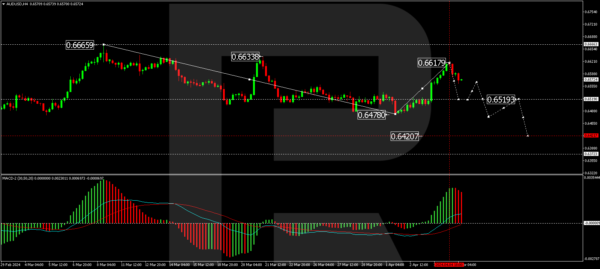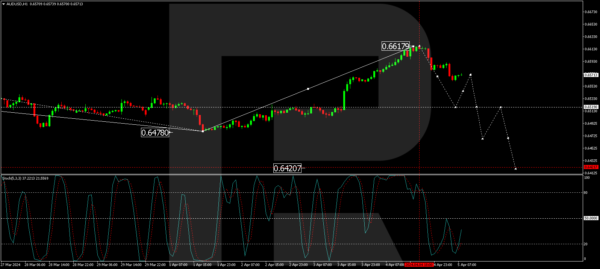After three days of significant gains, the Australian dollar is retreating against its American counterpart, with the AUD/USD pair falling to 0.6573.
The US dollar has rebounded after Federal Reserve officials expressed doubts about an immediate monetary policy easing. The discussion around interest rates and the timing of their reduction has become a central topic in the market. Signals that the Fed is prepared to cut rates three times this year, making borrowing costs more affordable, have put pressure on the US dollar, allowing other currencies to recover. However, signs that the Federal Reserve is still awaiting more data before deciding have led to a rebound in the USD and a decline in overall market sentiment.
Australia’s statistical data revealed that import volumes grew by 4.8% month-over-month in February, compared to a previous increase of 1.4%. Export volumes decreased by 2.2% month-over-month, with January’s figure at 1.5%. The positive trade balance in February was the lowest in five months, primarily due to a drop in overseas shipments of iron ore.
For the third consecutive meeting, the Reserve Bank of Australia (RBA) has left the interest rate unchanged at 4.35% annually, its highest level in 12 years. Meanwhile, the RBA has omitted any mention of potential rate hikes from its comments, confident in reducing inflationary pressure. This has led to forecasts that borrowing costs in Australia may decrease later this year.
Technical analysis of AUD/USD
On the H4 chart of AUD/USD, a downward wave to 0.6480 and a correction to 0.6617 have been completed. We expect the start of a new decline to 0.6422. The first structure of the decline is forming today, targeting 0.6520. After completing this, we anticipate a consolidation range. Exiting this range downward could lead to a wave towards 0.6472, potentially extending the trend down to 0.6422. The MACD indicator, with its signal line below zero, supports this scenario, expecting new lows.
On the H1 chart of AUD/USD, a downward wave structure to 0.6520 is forming. Following this, a correction to 0.6572 is anticipated, and a decline to 0.6490, with the trend continuing to 0.6422, is expected. The Stochastic oscillator, with its signal line currently below 20 but poised to rise to 50, technically supports this scenario.















